Global growth, global opportunities — An interview with Roelof Westerbeek, President - DSM Engineering Plastics
Engineering plastics, owing to their better mechanical and thermal properties than commodity plastics, are increasingly replacing traditional materials such as metals in many applications. The unique combination of properties possessed by engineering plastics make them the material of choice for a large number of applications in various end-user industries such as automotive & transportation, consumer & appliances, electrical & electronics, construction & infrastructure, industrial & machinery, medical and packaging. The global engineering plastics industry is expected to grow at a rate of around 8% in the coming years, driven by the growing purchasing power in developing economies.
DSM Engineering Plastics is a global supplier of high-performance engineering thermoplastic solutions. In India, DSM Engineering Plastics has been directly selling and manufacturing engineering plastics since 1999 with the acquisition of Cenka Plastics. DSM Engineering Plastics India started greenfield operation in Jan 2009 with a world class manufacturing facility. The company offers polyamides, polyesters and high-performance engineering plastics. These products are used in automotive, electrical and electronics, packaging and outdoor power equipment.
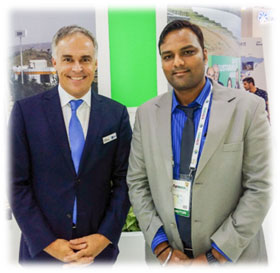
L to R: Roelof Westerbeek; Lekhraj Ghai
Roelof Westerbeek, President – DSM Engineering Plastics, in an exclusive interview with Lekhraj Ghai of POLYMERUPDATE discusses topics such as:
• Growth of the engineering plastics industry
• Sustainability and innovation practices
• Engineering plastics market scenario
• Asia-Pacific Engineering Plastics market
• Raw materials and processing methods
• Products and applications in various sectors
• Plastindia experience
Interview of Roelof Westerbeek (RW) with Lekhraj Ghai (LG):
LG: What will be the contribution of DSM Engineering Plastics towards the growth of the global engineering plastics industry?
SW: There are a number of positive growth drivers in the automotive industry and the outlook for engineering plastics is very promising. Automobile production is on the rise and there is a strong demand for lighter and safer vehicles. Our strategy is to capture the available growth opportunities and grow at a rate that is faster than that of the market. We focus on innovation, sustainability and capturing the growth in high-growth economies. So it is essential that we have new products as well as a good understanding of the industry's needs and applications. Our key focus is innovation; however, we also place significant emphasis on sustainability. This comes from a strong belief that sustainability is a key business growth driver. And finally, we believe that capturing growth in high-growth economies such as India and China is critical for success. This is why we set out to increase our market share and expand our product portfolio in high-growth economies.
Putting all this together, we intend to grow the use of engineering plastics by introducing innovative and sustainable materials in automotive, electrical and electronics (E&E), flexible food packaging and consumer goods.
Our ambition is to be among the top three companies globally and more specifically, when it comes to materials such as polyamides, polyesters and thermoplastic elastomers, we aspire to be the global number one.
LG: How important is the Asia-Pacific region as an engineering plastics market?
SW:
We expect that two-thirds of our growth in the next 5–10 years will come from the Asia-Pacific region. Asia is already our largest region and as such it is extremely important for us, which is why we moved our headquarters to Singapore. Within Asia, China, India, Japan and South Korea, which are strong in manufacturing, are important. However, in addition to manufacturing base we also consider specification power when it comes to determining the relative importance of a country. For instance, to capture growth in China, which is the largest market in Asia-Pacific, we will also need to be strong in Japan because many Japanese companies manufacture in China. So Japan is very important for sales and for specification power. There are also quite a few large companies in South Korea.
Moreover, to grow in Asia we also need to be strong in Europe and America much of the growth in Asia is from global companies originating in Europe. For example, the major portion of the growth in China's automotive industry is driven by European and American automotive companies and not by local Chinese companies. Therefore, DSM's position in both Europe and Asia is critical for capturing the growth opportunities in Asia-Pacific. Many of our existing customers are global companies and if we want to grow in Asia we need to be strong across the world.
LG: Which are the high-growth economies that DSM Engineering Plastics is looking at?
SW: In addition to the BRIC economies, Mexico, Turkey, Vietnam and some Latin American countries are very important in our business strategy. Among the BRIC, the economies of India and China are doing quite well, while Russia and Brazil are lagging. India's rising middle class, increasing numbers of cars, increasing demand for lighter vehicles and growth in food packaging are all positive drivers for engineering plastics. At DSM Engineering Plastics, we have a clear strategy to capture the growth opportunities in India. Meanwhile, Brazil's economy is not doing too well and its people's spending power has been affected. With the devaluation of the ruble, Russia's economy is suffering. Russia may offer a good opportunity in the long term but at the moment the demand for plastics in Russia is weak. At this point in time, Mexico seems to be a good opportunity as manufacturing form North America has increasingly moved into Mexico over the last few years.
LG: What types of processing techniques are employed by the engineering plastics industry?
SW: Engineering plastics extensively employ injection molding, blow molding and extrusion. Food packaging uses mostly films, which are extruded in single and multi-layers, whilst cast and blown films are also used extensively. However, the main process is still injection molding followed by extrusion and blow molding and their sub-techniques. Essentially, the engineering plastics industry employs the same processing techniques as commodity plastics, with the exception of rotomolding, which is not very common in these types of plastics.
LG: : Could you throw some light on the raw materials required for engineering plastics? Does DSM Engineering Plastics source its material entirely from DSM Fibre Intermediates, which produces ACN and caprolactam?
SW: Polymers such as polyamides, polyesters, high-performance polyamides and thermoplastic elastomers are produced by DSM in Europe, China, USA and Taiwan. The polymers that feed our compounding plants are all produced by DSM. Feedstock to produce the polymers is obtained either from within DSM or procured from outside. For instance, acrylonitrile and caprolactam, which are the feedstock for Polyamide 46 and Polyamide 6, respectively, are produced by DSM while BDO, which is used in our thermoplastic copolyester, is sourced from the free market. In short, the polymers and compounds are always manufactured in DSM plants while the precursors for the polymers are sometimes sourced from outside.
LG: What are your thoughts on the export of manufacturing from China to other countries because of the involved high costs?
SW: Around ten years ago there was a lot of offshoring of manufacturing into China and tremendous growth was envisaged for engineering plastics. Growth per year for engineering plastics in China is still phenomenal, albeit a bit less than what it used to be. For some industries, the costs in China have risen very sharply in the recent past and many companies have moved their manufacturing out of China to countries like Vietnam, Malaysia and Thailand and even to Mexico. However, manufacturing in China is still quite impressive and is still very functional. Also, plastics consumption in China is still substantially lower than that in Europe and America. The penetration of engineering plastics in China is expected to continue for many years to come. So, we are not really concerned about the growth opportunities in China. Of course, there are always some hiccups like the volatility in raw materials like benzene and caprolactam, but we believe this is a part of the normal cycle of commodity raw materials. So, looking at it from a broader perspective, we can remain very positive about the growth of engineering plastics in China.
LG: What about the challenges faced by DSM's caprolactam business in China?
SW: Like any other commodity, caprolactam is riding the waves of the economic cycle. Over the past few years the caprolactam capacity in China has increased significantly. From being majorly reliant on imports, China has now become almost self-sufficient in caprolactam. The new entrants are putting pressure on the caprolactam business in China. However, the strong market dynamics is not really affecting the engineering plastics industry. The reason why so much caprolactam capacity has come on stream is that people are very positive about the future demand of Polyamide 6—as almost all of the caprolactam is used for the manufacture of Polyamide 6. As such, the market for Polyamide 6 for engineering plastics use and for other applications like textile and industrial fibre is expected to remain very healthy in the future.
LG: What has been the impact of the recent slump in crude oil prices on the global engineering plastics business?
SW: Most of our raw materials go through cycles and these have some impact on our business, although less than you might imagine. With a strong focus on innovation and product development, our business processes are long-term—and therefore, less affected by market fluctuations.
LG: What products does DSM Engineering Plastics have on offer for the packaging sector?
SW: For the packaging sector the biggest solution offered by DSM Engineering Plastics is Akulon® Polyamide 6, which finds applications in fresh food packaging, such as for cheese, meat, vegetables and rice and which provides excellent barrier properties against oxygen and carbon dioxide. Another important solution by DSM Engineering Plastics for packaging is the Arnitel® thermoplastic elastomer product line. These are designed to be breathable and allow the passage of oxygen and carbon dioxide at a certain rate.
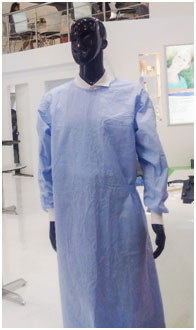
A DSM Engineering Plastics surgical gown on display at Plastindia 2015
Photo: Manish Chaudhari
LG: How does DSM Engineering Plastics contribute towards the healthcare sector?
SW: DSM Engineering Plastics makes materials for surgical gowns and doctors' clothes, which offer protection from bacteria. We also manufacture materials that are used in healthcare equipment and medical devices. DSM also manufactures bio-medical materials, which are used inside the human body. Human life expectancy has gone up, there are more older people around and so there is an increased need for all kinds of replacement body parts, such as hip, knee and joints. The bio-medical materials business holds a lot of promise as the need for such materials is growing rapidly.
LG: What are the sustainable practices adopted by DSM Engineering Plastics?
SW:
Royal DSM has very clear targets related to sustainable operations. We make a conscious effort to reduce the amounts of water and energy that we use and to reduce carbon dioxide emissions. We have corporate targets that are published in our annual report. These targets are then translated for each of our businesses. As the leader of DSM Engineering Plastics, I am entrusted with the responsibility to attain certain sustainability targets every year. In effect this means that for each of our factories we set targets for energy, water and emissions and we endeavor to reach—or better—those targets. We also measure our sales and quantify how much of it is contributing towards sustainability. Each year, higher targets are set so that more and more of our sales contribute towards a better, sustainable society.
Another sustainable practice adopted by DSM is that we only work on those innovations and introduce those solutions that contribute lower environmental footprint. We introduce a new solution only if its environmental footprint is lower than that of the incumbent solution, be it a plastic or a metal material. All of DSM's innovations are gauged in terms of their environmental footprint, before they are introduced in the market. So, every dollar spent by DSM on innovation goes towards sustainable development.
LG: Which of the recent or upcoming mergers and partnerships of DSM Engineering Plastics are expected to influence the future of the company?
SW: The mission of DSM Engineering Plastics is to strengthen and accelerate growth. Our strategy is to grow autonomously and at the same time we are open to partnerships to boost growth. DSM has a policy to never disclose such activities but I can tell you that since we belong to the global market, if we look for partnerships it will be across the globe and not just in one country.
LG: How has your experience been at this year's Plastindia?
SW: Plastindia at Gandhinagar has been an interesting experience for us. Although we are quite impressed with the exhibition hall and the facilities provided, travel to and from hotels has been a bit more challenging. Perhaps that is the reason why the visitor numbers are slightly below expectations. Nevertheless, I am glad to have visited Gujarat, the home state of Prime Minister Narendra Modi. We found Gandhinagar (pretty) clean, well-organized and well-run.
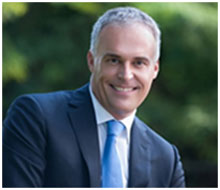
Roelof Westerbeek became the President of the DSM Engineering Plastics business group in 2008. Mr. Westerbeek joined DSM in 1989 and has held several positions in the company including General Product Manager and Marketing & Sales Director before taking on the position of President of the Business Unit Asia Pacific of DSM Engineering Plastics in 1998. Mr. Westerbeek holds masters in Aeronautical Engineering from the Technology University in the Netherlands.
END
For further information, commentary and interviews, please contact us on +(91-22) 61772000 and info@polymerupdate.com
ABOUT POLYMERUPDATE

POLYMERUPDATE is an online destination for the plastics and petrochemical industry, which specializes in providing market- moving information and pricing data on petrochemical products and industrial polymers. Global players seeking polymer market
intelligence rely on the real-time news and price alerts provided on POLYMERUPDATE for making informed business-critical decisions. POLYMERUPDATE covers a whole spectrum of products such as Crude oil, Naphtha, Aromatics, Olefins, Polyolefins and Petrochemical Intermediates. With almost two decades of extensive experience in garnering and providing business-critical content, POLYMERUPDATE has expanded its readership to more than 60 countries in the world and its pricing methodology is considered as a benchmark across South Asia. POLYMERUPDATE interviews and articles are a rich source of information on the latest trends in the chemical and petrochemical industry.
Visit POLYMERUPDATE on the internet at www.polymerupdate.com
Sign up for our newsletters
More like this
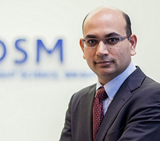
Plastindia Interview Snippets – A Special Feature Read More
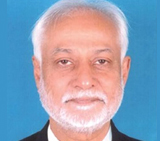
New venue, enhanced opportunities - An interview with Plastindia President Subhash Kadakia Read More
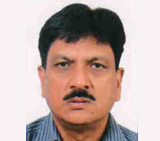
PET for pharma: a boon or a curse? – An interview with PCMA President Biswajit Ghosh Read More
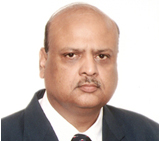
Quality upgradation and skill development crucial for plastics growth – An interview with AIPMA President Rituraj Gupta Read More
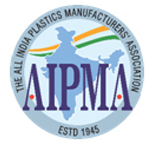
Apex plastics body AIPMA urges government to reconsider PET ban – A POLYMERUPDATE special report Read More



